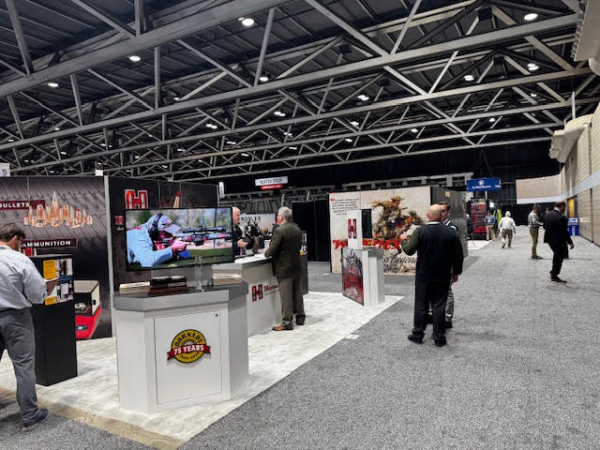Wednesday’s export and import numbers mean nothing to most consumers, understandably so.
But to some, they are indicators, or, as you will, data points that do matter, mainly to the Federal Reserve.
While many Americans don’t understand the Fed's mission, it has a dual mandate of promoting maximum employment and stable prices or controlling inflation in layperson’s terms.
The Fed has been the blanket over the economy for most of the pandemic and the exit from the worst health disaster in the last 100 years.
At times, that blanket has been warm and cuddly; at times, it has been stifling to the economy.
All along, there has been the hope of a soft-landing underpinning a fragile economy.

That economy has cast a pall over the 50th National Association of Sporting Goods Wholesalers Expo & Annual Meetings in Kansas City, Missouri.
Even before companies arrived in Kansas City, the word was out through the proverbial grapevine that the outdoor industry as a whole was suffering. Many saw lower sales, leading to lower profits.
But once you talk to the individual owners or those in corporate C-suites, do you understand the gravity of the situation?
And it’s not one individual factor but a combination of factors that have most of the exhibitors crying a song not of woe but of concern.
Almost every company I visited has had a decent year in gross sales or revenue. Still, the margins and profits have been hit hard by the past years of inflation, and now distributors and consumers are apprehensive about buying more.
One company that owns at least six different brands covering all aspects of the outdoor industry is a poster child for the current situation. While meeting revenue goals, it is losing out on the profit and margin side.
While materials costs have gone up, health insurance costs for employees, salaries raised when necessary to stay even with the inflation rate, and shipping costs have caused a downturn in profits.
To maintain market share, they didn’t increase the price to their distributors, instead eating the increase, which again hit the bottom line.
And they decided to keep their prices steady for 2025, in hopes of a better year.
If there is a continual theme this week, it’s that sales have been okay, but profits have been hit by the increase in costs.
For some, that is not the case, as a small knife company saw both revenue and profits go down in 2024.
While costs are part of the issue, the other part is the consumer.
Some lower—and middle-class consumers are skittish about the economy, making the purchase of a $250 knife not part of their buying decision.
Add the election, and the general tenor of what may be coming in the future, puts them off of a expensive and unnecessary purchase.
The higher-end consumer is not as affected, but the company is having a harder time getting its product in their hands because distributors and retailers are also nervous about what’s coming around the corner and would rather keep their money available than pour it into inventory that may or may not sell.
In other cases, the distributor or the retailer has too much inventory and doesn’t want any more financial exposure.
It’s the old Catch-22: You must spend money to make money, but many distributors and retailers choose to keep their powder dry.
When will this cycle break?
Inflation seems tamed, and the soft landing is well-engrained into the economy.
The Fed has a good grasp of inflation and labor for the foreseeable future.
The election will likely not significantly change how the industry does business, so the only option is to wait.
Give the distributors, retailers, and consumers a chance to take a breath and see where the economy is by early to mid-2025.
It’s not what anyone in Kansas City was hoping for, but the reality of business is that you will have good years and bad years.
Hopefully 2025 will be better.
— Alex Miceli